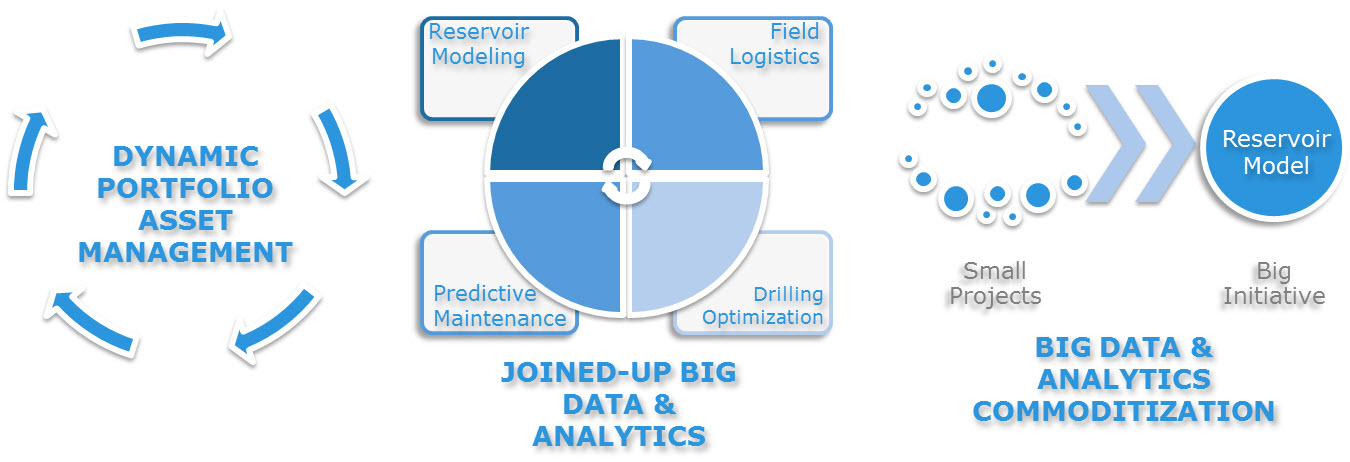Recently, I attended the Society of Petroleum Engineers Forum event on Big Data Analytics in Dubai, UAE. Forum events are industry led and have no sponsorship, they bring together 50 thought leaders from vendors, oilfield service companies and oil companies to look at the challenges and opportunities related to a particular topic. It’s pretty exhausting being in a room full of smart people for four days, and my brain definitely needed the weekend to cool down.
But over four days of workshops and discussions, a clear theme was identified: The lack of an integrated approach to big data analytics. Companies complained of a lack of joined up thinking and of business stakeholders investing in bespoke point solutions that only increased the complexity and challenges of delivering future solutions. It was pretty cool to be able to talk holistically about a range of solutions that addressed infrastructure, data integration, data quality, data analytics, data persistence, the role of the cloud and the third platform as well as some top notch PAAS and agile development smarts. EMC has all of these, available (as is our want), either piece by piece or as a fully engineered solution wrapped up in the ribbon that is the EMC Federation Business Data Lake.
However, the implementation of an integrated big data analytics capability across the enterprise has consequences beyond those I had anticipated and at all levels of the business:
- Strategically – One attendee talked of his frustration at the lack of consistent adoption of big data analytics to support portfolio management. A comprehensive approach would allow companies to dynamically manage their portfolio of assets supporting the regular review of business strategy based on changing market conditions. Optimizing portfolio management has an ROI running into the hundreds of millions if not billions of dollars. One speaker talked passionately about how “bias is the mortal enemy of upstream performance.” Big data analytics should help remove bias and support rational decision making.
- Operationally – Many companies are introducing big data analytics tools to address particular workflows or challenges. While these solutions might address particular high value problems, often they are not being implemented in a joined up way. Almost all of the attendees supported having a centralized big data analytics function with data engineers embedded into asset teams but working as part of a centralized group working on a common set of platforms.
- Tactically – There was quite a lot of talk as to how big data analytics could be commoditized to support smaller opportunities. One example given was that maybe you could save $40,000 a year through analyzing water purchasing contracts and linking this to your reservoir model. But that only makes sense if you could run a project to implement such a solution for less than $60K (assume a 100% ROI over 3 years and an 18 month payback). The only way you can support small projects is to have all of the infrastructure and resources in place already.
Of course a lot of talk at the event was around the oil price. But did this put people off looking at technology projects? Not really, as one person put it – “Oil companies of all sizes are facing an existential crisis, the company that is first to effectively leverage big data analytics across their enterprise will have a material competitive advantage over its competitors. Then everyone else will have to follow suit.”
